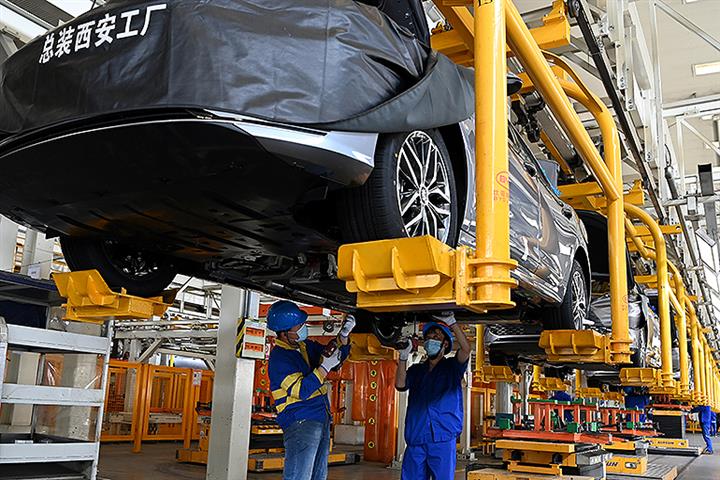 Shaanxi Solidifies Spot in China Auto Ranking as BYD, Geely Outputs Surge
Shaanxi Solidifies Spot in China Auto Ranking as BYD, Geely Outputs Surge(Yicai Global) Nov. 16 -- The northwestern Chinese province of Shaanxi, home to the enlarging facilities of BYD and Geely Holding Group, is becoming an increasingly influential automotive hub amid surging new energy vehicle demand.
From January to October, the province's automobile production exceeded a historic high of one million units, rising by 63 percent from a year ago, and the growth rate is higher than that of any other region, according to the latest information from the Shaanxi Automotive Industry Association.
The number of vehicles produced in Shaanxi this year should reach around 1.2 million units, and more than one million of that is likely to be NEVs, the association predicted.
The province is expected to continue expanding its auto production rapidly in the next few years as its existing and additional capacity that has already begun building tally about three million units, Feng Lei, research director Hsmap, said to Yicai Global.
This year, Shaanxi is very likely to climb to the eighth slot in the ranking of Chinese provinces' car output from last year's 13th spot. Over the past three years, Shaanxi’s car output has been constantly rising. Its figure totaled 801,000 units in 2021, a major jump from 547,000 units in 2019 when it was No. 18 among all provinces.
A major driving force in the output surge is new plants set up by BYD and Hangzhou-based Geely, known for brands such as Maple and Zeekr, in recent years, according to Feng. BYD's facility in the provincial capital of Xi'an produced 51 percent of the province’s total car output in 2021, and two-thirds of the firm's tally was electric. The Shenzhen-based carmaker is planning to boost the factory's annual capacity to one million units via expansion that was kicked off in mid-September.
Shaanxi’s automotive supply chains and ecosystem are constantly improving, Feng said. For example, BYD and the municipal government of Baoji, the second-largest city in the province, agreed earlier this month that the car firm will build a new facility to produce its parts locally, Feng added.
Meanwhile, other provinces that used to top the car production charts are waning as the business landscape is changing amid the booming new energy vehicle market. For example, the southwestern municipality of Chongqing, which snatched the nation’s top spot in the number of automobiles produced in 2016 by churning out nearly 3.2 million vehicles that year, manufactured less than two million units last year. Moreover, the volume of the northeastern province of Jilin, home to China’s state-owned giant FAW Group, declined to 2.4 million units last year from about 2.9 million units in 2019.
Shaanxi’s production capacity advantages in heavy-duty trucks and NEVs are expected to be further strengthened in the next few years, said Zeng Zhaoning, a member of Shaanxi’s advisor committee for government decision-making. No doubt, the province’s ranking in the domestic automobile industry will also further rise, Zeng added.
Editors: Tang Shihua, Emmi Laine, Xiao Yi